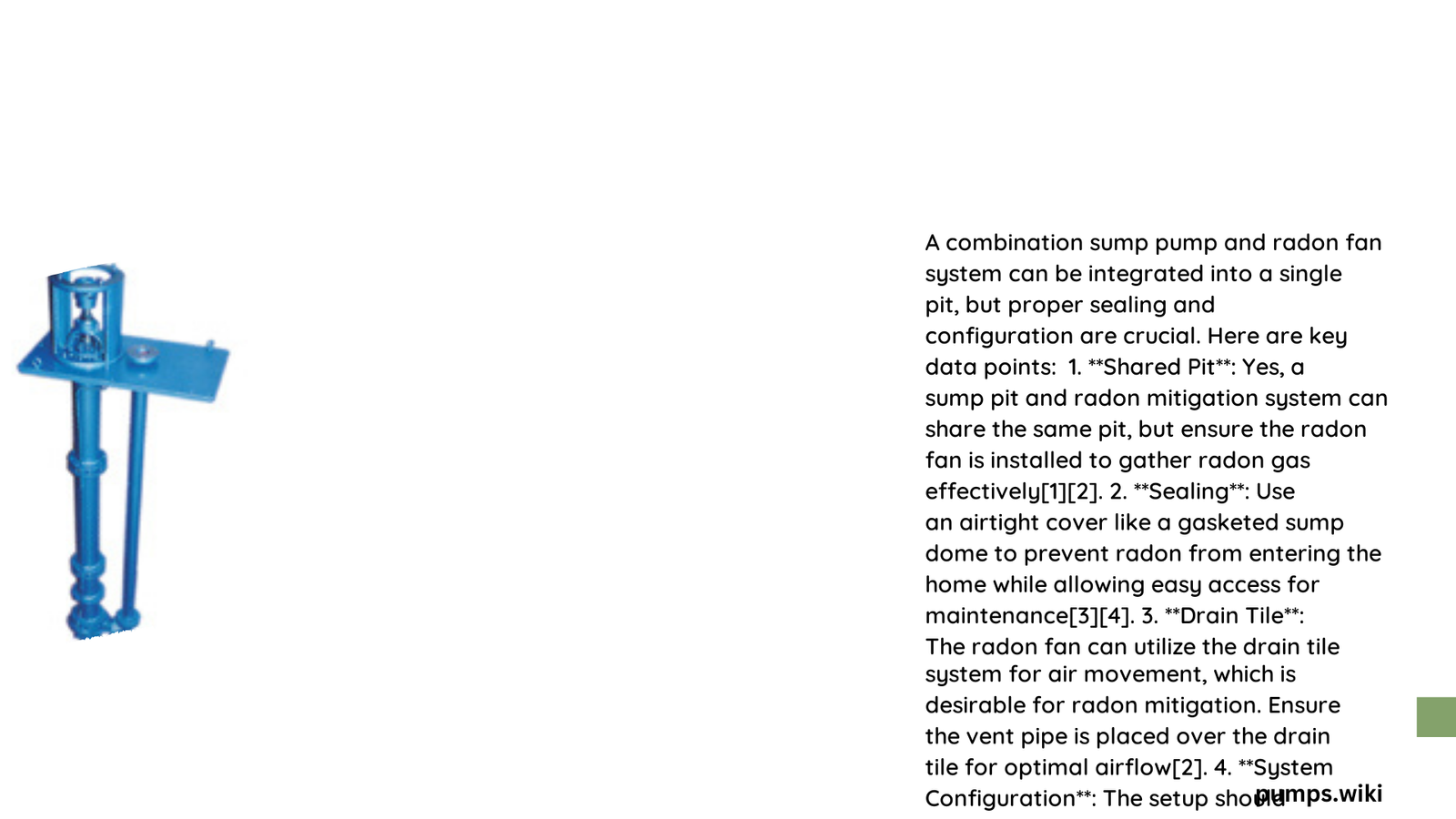A combination sump pump radon fan represents an innovative solution for homeowners battling two critical challenges: water management and dangerous radon gas elimination. This integrated system leverages existing sump infrastructure to create a powerful, multi-functional approach to protecting residential indoor environments from moisture intrusion and radioactive gas accumulation, ensuring comprehensive home safety and air quality improvement.
What Makes a Combination Sump Pump Radon Fan Essential?
Why Should Homeowners Consider This Integrated System?
Radon, an invisible and odorless radioactive gas, poses significant health risks, potentially causing lung cancer. A combination sump pump radon fan addresses multiple environmental challenges simultaneously by:
- Removing excess groundwater
- Mitigating radon gas accumulation
- Preventing basement moisture-related issues
- Improving overall indoor air quality
How Does the System Technically Operate?
The combination sump pump radon fan works through a sophisticated ventilation mechanism:
- Suction Point Creation
- Utilizes existing sump pit as primary collection point
- Creates negative pressure beneath foundation
-
Draws radon gas from soil before entering living spaces
-
Ventilation Process
- Radon fan generates continuous airflow
- Redirects contaminated air outside through specialized piping
- Maintains consistent sub-slab depressurization
What Are Critical Installation Considerations?

What Equipment Becomes Necessary?
| Component | Specification | Purpose |
|---|---|---|
| Radon Fan | 100-200 CFM | Generate airflow |
| PVC Piping | 4″ Diameter | Gas redirection |
| Sump Cover | Airtight Design | Prevent air leakage |
| Manometer | Pressure Indicator | System performance monitoring |
What Tools Support Successful Implementation?
Essential tools include:
– Rotary hammer
– Hole saw (3-5/8 inch)
– Thread sealant
– Caulking gun
– Level
– Measuring tape
What Maintenance Protocols Ensure Optimal Performance?
How Often Should System Components Be Checked?
Recommended maintenance schedule:
– Monthly: Visual system inspection
– Quarterly: Manometer pressure verification
– Annually: Comprehensive system performance testing
– Every 3-5 Years: Professional radon level assessment
What Cost Factors Influence System Selection?
What Financial Investments Become Necessary?
Cost breakdown:
– Radon Fan: $200 – $500
– PVC Materials: $100 – $300
– Professional Installation: $500 – $2,000
– Total Estimated Investment: $800 – $2,800
What Performance Metrics Matter?
How Effective Are These Systems?
Performance indicators:
– Radon reduction: Up to 99%
– Moisture control: Significant improvement
– Energy efficiency: Minimal electrical consumption
– Longevity: 5-10 years with proper maintenance
What Potential Challenges Might Arise?
What Problems Could Compromise System Functionality?
Potential issues include:
– Condensation buildup
– Seal degradation
– Fan motor failure
– Improper initial installation
Conclusion
A combination sump pump radon fan represents a sophisticated, multi-purpose solution for homeowners seeking comprehensive environmental protection. By addressing both water management and radon mitigation, this system offers an intelligent approach to indoor safety.
